Tear Gas, Riot Police and Barbecue: 1 May 2012 in Kreuzberg
There are two faces to the International Workers Day protests in Berlin. There are the street parties, with DJs setting whole streets alight with thumping electronica. But more famous is the violence. 1 May in Kreuzberg is famous for: riots, blazing supermarkets, protesters throwing paving stones, tear gas to disperse the anger, and arsonist strikes against cars, dumpsters, and banks.
‘Are you coming to the Myfest street festival on Oranienstraße?’, I ask a friend with children. No way, is her answer. ‘What kind of parent do you think I am?’
Everyone’s a little nervous this year. It’s the 25th anniversary of the original 1987 protests, against the ‘bourgeois’ 750-year anniversary celebrations of the founding of Berlin. Today’s protests are during a financial crisis. Countries are rolling back benefits all over Europe. There are rumours that we’re in for something BIG. It’s wise to stay well away, but of course we’re all attracted like flies to a flaming Molotov.
Approaching the erstwhile radical SO36 neighbourhood from the South, I encounter a street full of armoured cars near Hermannplatz. There are hundreds of men in riot gear. Banks and businesses have metal screens I’ve never seen before pulled down over their windows. Traffic is blocked.
I decide on taking the U-Bahn to Kottbusser Tor to avoid the police checkpoints. Coming up to street level is a fight against a tide of people. The streets are packed. I’ve never seen so many riot police. 7108 of them total, I later learn. One for every five of the 35-40 000 Myfest participants. They stand above peering at the packed streets from terrace of the Kreuzberg Zentrum. A friend asks if he can take a picture with them next to an armoured car, and is stared down.
The police make lines controlling the movement of people, segmenting the street into manageable morsels. I notice that in the public parks, where there are jugglers and folk musicians, there are friendly ‘Anti-conflict’ teams instead. It’s on the edges, ready, that there’s the grimmer face of the riot squad, which looks as eager for a fight as some of the protesters.
And so was 1 May 2012 violent, destructive… the ‘big one’ everyone anticipated?
Decidedly not.
In front of the Jewish Museum there is the habitual rock throwing by the 10 000 demonstrators gathered there. They have taken to the streets for a grab-bag of causes, from the fight against rising rents to calls for the end of capitalism. But their demonstrations are kept short by the police. A single dumpster is set on fire. A supermarket on Ritterstr. is vandalised, and also a bank on Skalitzerstr. More than 125 riot police are injured, a quarter more than last year, although the Mayor and Police call the atmosphere more peaceful and ‘an improvement’ over previous May Days. They state they are closer than ever to their goal of complete pacification of the 1 May demonstrations.
I see a few dejected protesters with red flags walking towards the U-bahn, their banners trailing through the plastic beer cups and paper plates smeared with mustard. There’s no smoke from tear gas, just from the barbecues.
I wince. I am glad that there has been little senseless violence, but I know that right now we need effective protest. In a time like now, when the achievements of the welfare state are being rolled back, we need to stand up for societies that protect the weak. But the messages of May Day are uncoordinated. Without a single cause to unite them, it’s not clear what the demonstrations are for. The riot police are much more effective at sending their message: that the power of the state to squash dissent is omnipotent.
Meanwhile, for most people visiting Kreuzberg on 1 May, neither peaceful nor violent demonstration is the destination. Rather they’re here for the incredible electronic music scene which unfolds late into the night in front of bars like Luzia. Thousands of revellers dance. The sight is amazing. It’s great to be in Berlin. I cannot believe the energy. There is, for a brief moment, a glimpse of the power of the crowd.

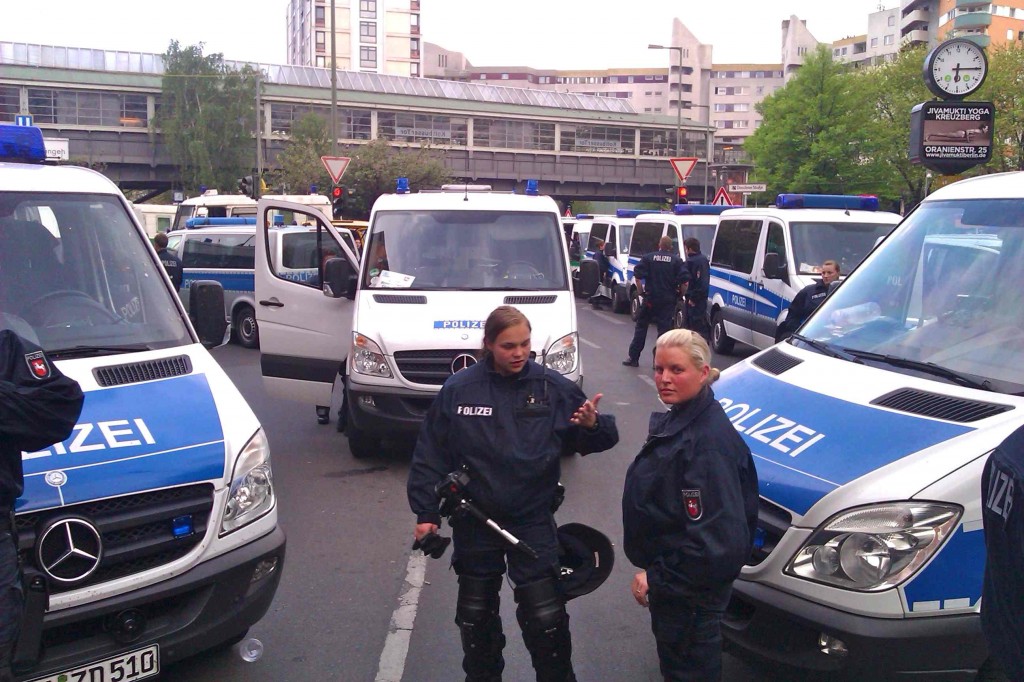
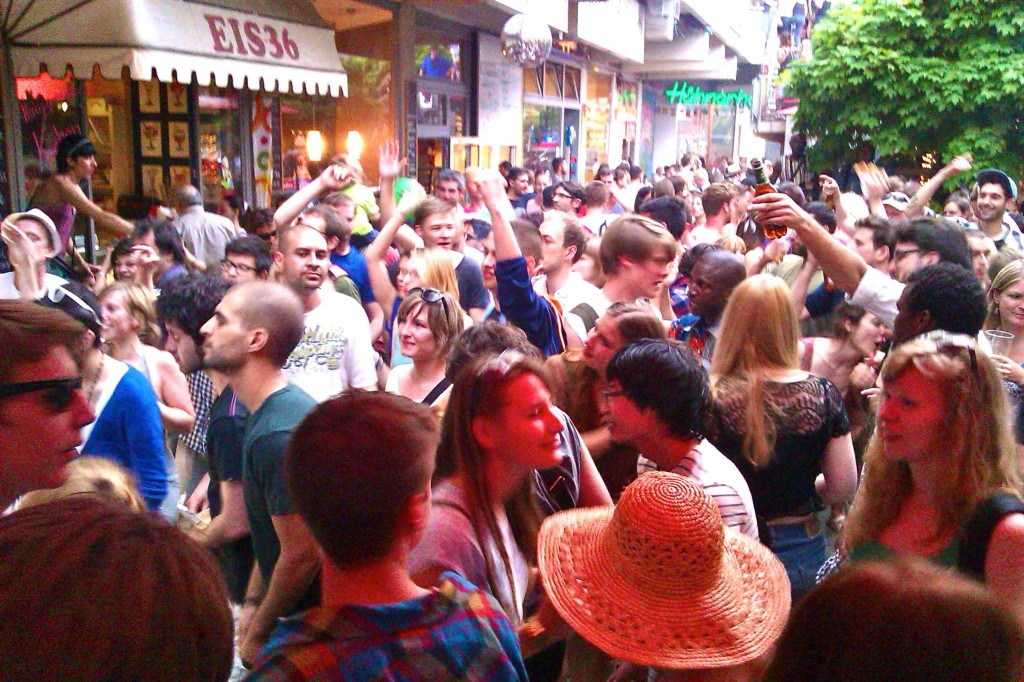
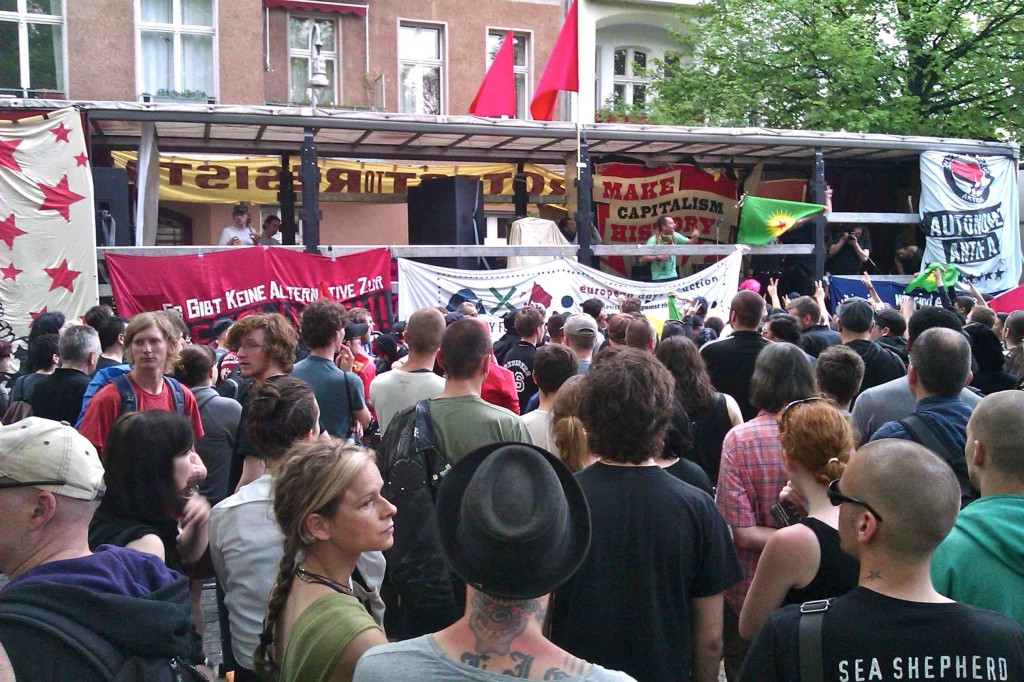

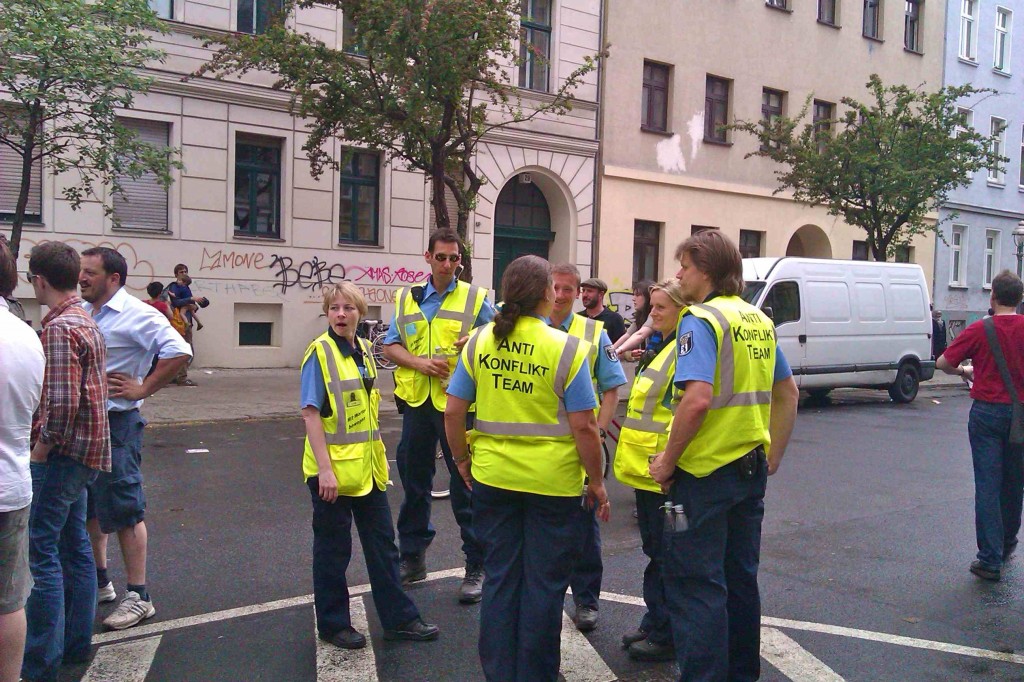
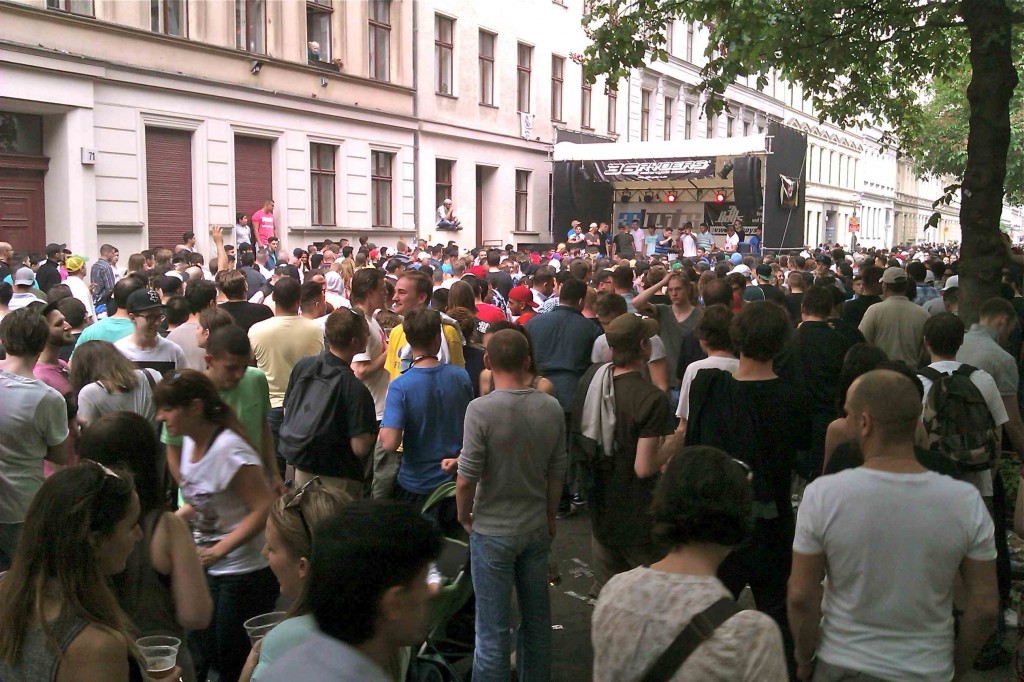
We live next to the Jewish Museum, and despite the demonstration not being as violent as predicted, it was still pretty scary to watch it unfolding right outside your house (there were actually two further dumpster fires in a side street, right under our balcony!) . Especially as it’s our first year here, so we didn’t know what to expect. Hopefully next time we’ll experience the more fun part of 1st May 🙂
http://exexpat.tumblr.com/post/22249624448/may-demonstration